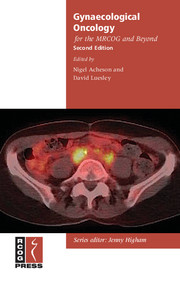Book contents
- Frontmatter
- Contents
- About the authors
- Preface
- Introduction to the second edition
- Abbreviations
- 1 Basic epidemiology
- 2 Basic pathology of gynaecological cancer
- 3 Preinvasive disease of the lower genital tract
- 4 Radiological assessment
- 5 Surgical principles
- 6 Role of laparoscopic surgery
- 7 Radiotherapy: principles and applications
- 8 Chemotherapy: principles and applications
- 9 Ovarian cancer standards of care
- 10 Endometrial cancer standards of care
- 11 Cervical cancer standards of care
- 12 Vulval cancer standards of care
- 13 Uncommon gynaecological cancers
- 14 Palliative care
- 15 Emergencies and treatment-related complications in gynaecological oncology
- Appendix 1 FIGO staging of gynaecological cancers
- Index
10 - Endometrial cancer standards of care
Published online by Cambridge University Press: 05 August 2014
- Frontmatter
- Contents
- About the authors
- Preface
- Introduction to the second edition
- Abbreviations
- 1 Basic epidemiology
- 2 Basic pathology of gynaecological cancer
- 3 Preinvasive disease of the lower genital tract
- 4 Radiological assessment
- 5 Surgical principles
- 6 Role of laparoscopic surgery
- 7 Radiotherapy: principles and applications
- 8 Chemotherapy: principles and applications
- 9 Ovarian cancer standards of care
- 10 Endometrial cancer standards of care
- 11 Cervical cancer standards of care
- 12 Vulval cancer standards of care
- 13 Uncommon gynaecological cancers
- 14 Palliative care
- 15 Emergencies and treatment-related complications in gynaecological oncology
- Appendix 1 FIGO staging of gynaecological cancers
- Index
Summary
Signs and symptoms
Postmenopausal bleeding is the most common complaint in women in whom endometrial cancer is diagnosed. Around 90% of women are diagnosed after the age of 50 years and postmenopausal bleeding is associated with an underlying carcinoma in up to 10% of women. While commonly associated with older women, endometrial cancer can occur in younger women and may present with irregular or intermenstrual bleeding. Such women often experience a delay in diagnosis, as management may initially be via a menstrual disorders clinic and characteristic findings at hysteroscopy may be lacking. Because of the strong aetiological association with estrogenic stimulation, the diagnosis should be considered in symptomatic younger women with polycystic ovary syndrome, those with irregular bleeding on hormone replacement therapy or those taking tamoxifen. Tamoxifen stimulates ovarian estrogen biosynthesis and elevates plasma estrogen levels, increasing the risk of endometrial cancer.
Endometrial hyperplasia can be termed a premalignant condition of the endometrium. Occurring as a result of estrogenic stimulation of the endometrium, endometrial hyperplasia is classified as simple or complex – in the absence of cytological atypia the risk of malignancy is low (1–4%) but the risk of co-existing or rapidly developing malignancy with a histological finding of complex endometrial hyperplasia with atypia may be as high as 43%.
Keywords
- Type
- Chapter
- Information
- Gynaecological Oncology for the MRCOG and Beyond , pp. 145 - 154Publisher: Cambridge University PressPrint publication year: 2011



